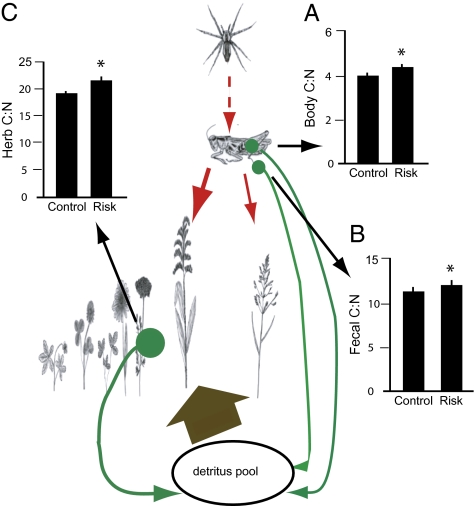Fig. 2.
Pathways through which C:N change impacts the ecosystem. Changes in herbivore physiological demand for C and N in response to predation risk can lead to shifts in C:N content of organic material along four pathways that eventually lead to the organic-matter pool to be decomposed. (A) C:N composition of herbivore body tissue. (B) C:N composition of herbivore feces. (C) Changes in C:N content of the herb community as a result of mediation of Solidago-competitive dominance by herbivory in the face of predation risk. Solid red arrows indicate direct trophic interactions; dashed red arrows indicate a nontrophic fear effect. Arrow thickness indicates food preference under risk conditions. Green arrows indicate the source and fate of tissue C and N in the ecosystem. Values are mean ± SE. *, significant difference (P < 0.05).

